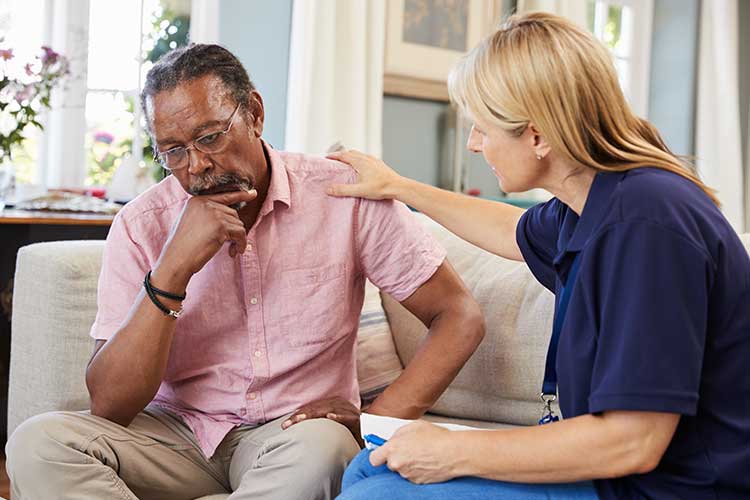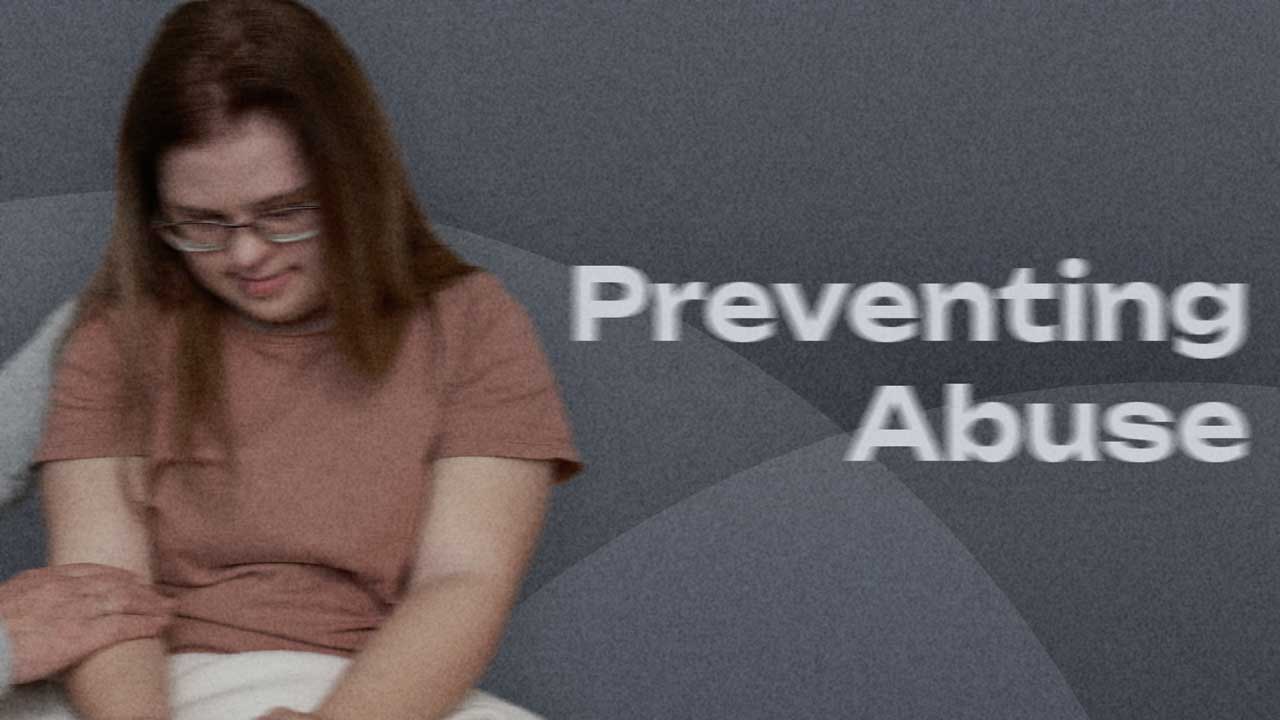Content warning: Please be aware that this article contains graphics and information relating to abuse, which some people may find distressing.
People living with disability may depend on others for care and support. For this reason, they are some of the most vulnerable members of our society (Better Health Channel 2015).
Disturbingly, 60% of people living with disability in Australia have experienced violence, exploitation, neglect, or abuse at some point during their lives, with women, girls, children and young people being particularly vulnerable (NDIS 2024; Vincent et al. 2023).
Any National Disability Insurance Scheme (NDIS) participant receiving care - regardless of age, gender, or disability - should be able to access support without experiencing (or fearing) violence, abuse, neglect, exploitation or discrimination.
Abusive behaviour of any kind towards participants (from staff, residents, or others) is a violation of basic human rights and unacceptable in any setting (Better Health Channel 2015).
This article provides an outline of different forms of abusive behaviour so that you can recognise the signs and take action.
Violence, Abuse, Neglect, Exploitation and Discrimination in the NDIS Practice Standards
Under Core Module 1: Rights and Responsibilities of the NDIS Practice Standards, NDIS participants should be able to access supports without fear or experience of violence, abuse, neglect, exploitation, or discrimination (NDIS 2021).
NDIS providers must meet the following quality indicators:
- Providers have policies, procedures and practices in place to actively prevent violence, abuse, neglect, exploitation and discrimination.
- Participants are informed about the use of advocates (including independent advocates) and are enabled to access advocates if allegations of violence, abuse, neglect, exploitation or discrimination are made.
- In the case of alleged or witnessed violence, abuse, neglect, exploitation or discrimination:
- The allegation or incident is acted upon.
- All affected participants are supported and assisted.
- Details of the incident, along with the outcomes of reviews and investigations, are recorded (where possible).
- Action is taken to prevent similar incidents from occurring again in the future.
(NDIS 2021)
Definitions of Violence, Abuse, Neglect, Exploitation and Discrimination
Violence (Physical Abuse)
Violence is defined as the use of physical force with the intention to hurt, damage or kill somebody else (Better Health Channel 2015). This might include, but is not limited to:
- Scratching
- Biting
- Pushing
- Shoving
- Slapping
- Kicking
- Choking
- Suffocation
- Throwing objects
- Force-feeding
- Using weapons or objects
- Physically restraining.
(ReachOut Australia 2024)

Abuse
Abuse is a violation of rights that involves the exploitation of power. There are several types of abuse:
Sexual Abuse
Sexual abuse encompasses any act of a sexual nature, including attempts to engage in such acts or actions aimed at a person's sexuality, involving the use of coercion. It can be perpetrated by anyone, regardless of their relationship to the victim, and can occur in any context (RACGP 2022).
Emotional/Psychological Abuse
Emotional or psychological abuse is behaviour that scares or terrorises someone, potentially causing them to lose confidence, self-esteem, or self-determination. It includes:
- Verbal abuse (subtle or overt)
- Humiliation
- Threats
- Extreme jealousy
- Suicide threats
- Stalking and harassment (in-person or through technology)
- Coercive control.
(RACGP 2022)
Social Abuse
Social abuse is the intentional isolation of a person from their family, friends, and other contacts (RACGP 2022).
Neglect
Neglect is the failure to fulfil the basic physical or psychological needs of a person under your care (RACGP 2022). It includes:
- Physical neglect, which might involve:
- Failure to provide the person with adequate food, shelter, clothing or protection, or
- Allowing the person to be placed at risk through unsafe environments or practices.
- Passive neglect: Withholding or failing to provide life necessities.
- Willful deprivation: Intentionally denying assistance, putting the person at risk of physical, mental, or emotional harm.
- Social neglect: Limiting the person’s social, intellectual, and emotional growth or wellbeing.
(Better Health Channel 2015)
Exploitation
Read: NDIS Participant Money and Property
Exploitation, also known as financial abuse or economic abuse, is the intentional misuse of a person’s money, property or assets for personal gain (RACGP 2022). It includes:
- Restricting the person’s access to (or information about) their money
- Fraudulently using the person’s money
- Stealing from the person
- Forcing the person to surrender their money or assets through coercion or deception.
(RACGP 2022)

Discrimination
Discrimination is the mistreatment or bullying of a person based on their personal characteristics (or presumed characteristics). These characteristics can include (but are not limited to) gender identity, age, sexual orientation, disability, employment, race or religious belief (Victorian Equal Opportunity & Human Rights Commission 2020).
Policies, Legislation and Services for Preventing Abuse
NDIS providers must establish clear policies and procedures to protect participants from abusive behaviour. They must also maintain a workplace culture that promotes positive values, experiences, and attitudes and is transparent about its processes (NDS 2017).
In addition to individual providers’ policies and procedures, there is federal and state legislation designed to protect the rights of people with disability.
For example, the Disability Act 2006 outlines the rights of people with disability. It contains provisions regarding disability services, including a mandatory explanation of rights to participants when they begin to use a service.
There are several Australian advocacy groups for people living with disability. The NDIS Standards state that participants should be provided with information about advocacy services and given access to advocacy in the case of an incident.
Reportable Incidents
Some incidents must be reported to the NDIS Commission within 24 hours of key personnel becoming aware of them (NDIS 2022a). These include:
- Death of a participant
- Serious injury of a participant
- Abuse or neglect of a participant
- Unlawful sexual or physical contact with, or assault of, a participant
- Sexual misconduct involving or in the presence of a participant - this includes grooming for sexual activity
- Unauthorised use of a restrictive practice.
(NDIS 2022a)
Note: The unauthorised use of a restrictive practice can be reported within five business days. However, if a participant was harmed due to the unauthorised restrictive practice, this must be reported within 24 hours like all other reportable incidents (NDIS 2022b).

Recognising the Signs of Abusive Behaviour
Participants experiencing abusive behaviour may not seek help due to fear, guilt, shame, lack of capacity, or lack of knowledge about the resources available to them (Better Health Channel 2015).
Therefore, it is important to be able to recognise the signs of abuse in case it is not being disclosed by the participant. Signs may include, but are not limited to:
- Poor personal hygiene or dirty clothes
- Fearful, anxious, or withdrawn behaviour
- Unexplained injuries
- Self-harm
- Changes in behaviour
- Disturbed sleep.
(DCSSDS 2024)
A more comprehensive list of potential indicators is available from the Queensland Department of Child Safety, Seniors and Disability Services.
Responding to Abuse
Providers should have clear policies and procedures for responding to abuse. All staff should be familiar with these frameworks, as well as their duty of care to participants (DCSSDS 2024).
NDIS workers may be the first people to notice or suspect abuse. If you suspect abuse:
- Make sure the victim is safe, provide medical assistance if needed, and remove the source of harm (e.g., another person or an object).
- Maintain any evidence and record all available information about the incident.
- Report the incident by following your organisation’s policies and procedures, along with any relevant legislation or requirements. Criminal acts must be reported to the police.
- Provide support to the victim and ensure they are protected from further harm.
- Escalate the incident if the resolution is unsatisfactory. Remember to follow your organisation's policies and procedures.
(DCSSDS 2024)
Conclusion
All NDIS participants have the right to receive care without abuse or fear of abuse. Abuse is never acceptable in the workplace. Ensure you can recognise the signs of abuse and always take action if you suspect a participant is being harmed.
Useful Organisations
- National Disability Abuse and Neglect Hotline
- National Disability Insurance Scheme
- National Disability Services
Test Your Knowledge
Question 1 of 3
If you suspect that a participant is experiencing abuse, what should be your first step?
Topics
References
- Better Health Channel 2015, People With a Disability who Experience Violence, Abuse or Neglect, Victoria State Government, viewed 19 August 2024, https://www.betterhealth.vic.gov.au/health/ServicesAndSupport/people-with-a-disability-who-experience-violence-abuse-or-neglect?viewAsPdf=true
- Department of Child Safety, Seniors and Disability Services 2024, Preventing and Responding to Abuse, Neglect and Exploitation, Queensland Government, viewed 19 August 2024, https://www.dcssds.qld.gov.au/our-work/disability-services/preventing-responding-abuse-neglect-exploitation
- National Disability Services 2017, Preventing Abuse, National Disability Services, viewed 19 August 2024, https://www.nds.org.au/zero-tolerance-framework/preventing-abuse
- NDIS Quality and Safeguards Commission 2022a, Incident Management and Reportable Incidents, Australian Government, viewed 19 August 2024, https://www.ndiscommission.gov.au/participants/incidents-and-behaviour-support/incident-reporting/incident-management-and-reportable
- NDIS Quality and Safeguards Commission 2024, NDIS Code of Conduct, Australian Government, viewed 19 August 2024, https://www.ndiscommission.gov.au/about/ndis-code-conduct
- NDIS Quality and Safeguards Commission 2021, NDIS Practice Standards: NDIS Practice Standards and Quality Indicators, Australian Government, viewed 19 August 2024, https://www.ndiscommission.gov.au/sites/default/files/2022-02/ndis-practice-standards-and-quality-indicatorsfinal1_1.pdf
- NDIS Quality and Safeguards Commission 2022b, Notify us About a Reportable Incident, Australian Government, viewed 19 August 2024, https://www.ndiscommission.gov.au/providers/complaints-and-incidents/notify-us-about-reportable-incident
- ReachOut Australia 2024, What is Physical Abuse?, ReachOut Australia, viewed 19 August 2024, https://au.reachout.com/challenges-and-coping/abuse-and-violence/what-is-physical-abuse
- Royal Australian College of General Practitioners 2022, Abuse and Violence: Working With our Patients in General Practice, 5th edn, RACGP, viewed 19 August 2024, https://www.racgp.org.au/getattachment/4ab6102c-67d9-4440-9398-a3ae759164ef/Abuse-and-violence-Working-with-our-patients-in-general-practice.aspx
- Victorian Equal Opportunity & Human Rights Commission 2020, Types of Discrimination, Australian Government, viewed 19 August 2024, https://www.humanrights.vic.gov.au/for-individuals/discrimination/
- Vincent et al. 2023, Research Report - Economic Cost of Violence, Abuse, Neglect and Exploitation of People with Disability, Australian Government, viewed 19 August 2024, https://disability.royalcommission.gov.au/system/files/2023-09/Research%20Report%20-%20Economic%20cost%20of%20violence%2C%20abuse%2C%20neglect%20and%20exploitation%20of%20people%20with%20disability.pdf
 New
New 
